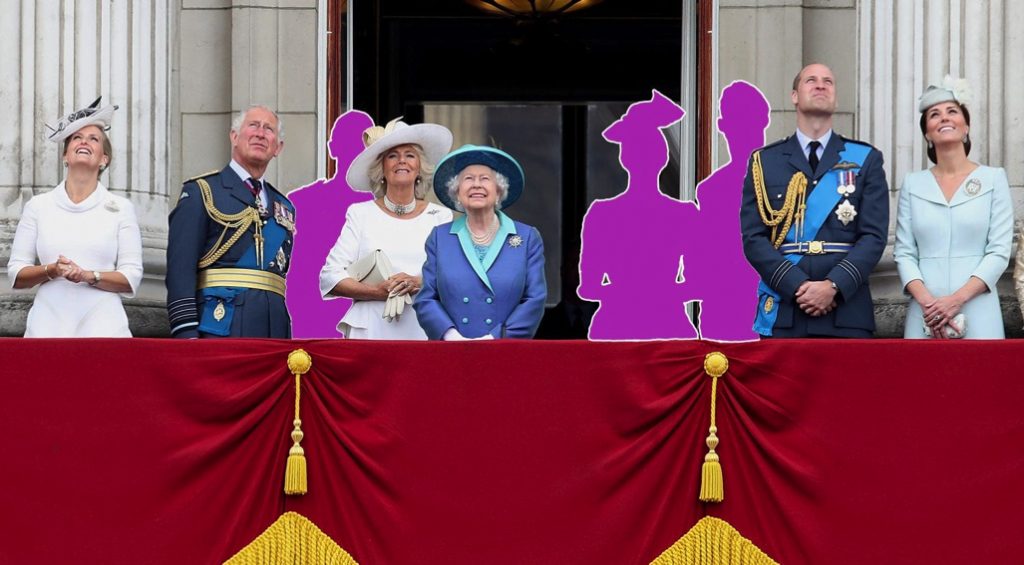What would your organization do if it suddenly lost one or more executive team members? Succession planning is a big part of the answer.
Lessons from the Royal Family in how the “unexpected” can blindside an organization.
INTRODUCTION:
This discussion of the everyday/everywhere impact of succession planning is the first in a series of blogs authored by The Synergy Organization’s nationally-recognized founder and CEO Dr. Kenneth R. Cohen that will appear in this space. The series discusses the insights into executive performance that Ken has gleaned in three decades of evidence based executive search® and evidence based executive assessments in the healthcare industry.
Ken is a valued member of NPDC’s Workshop Faculty and he invites your comments and will share many of them in future posts. You can reach him at ken@synergyorg.com.

The Royal Family’s recent problems serve to remind us that few things in life are as certain as death and taxes. The harsh reality is that unexpected “stuff” really does happens. And it happens a lot.
Embarrassingly for some, proof is all around us.
Prince Andrew made some poor choices for his “friends,” badly botched a TV interview aired around the world, and has “stepped back” from his royal duties. Surprise?
American commoner/actress/divorcee Meghan Markle apparently was not exactly clutched to the royal bosom nor embraced by the British tabloids. And now she and royal grandchild number two, Harry Duke of Sussex, have “stepped back” from the Royal Family. In fact, they’ve basically left the country. Surprise?
This, of course, comes years after next in line of succession to the throne Prince Charles’ embarrassing divorce from his fairy-tale Princess and subsequent marriage to his controversial long-time lover. Surprise?Can it be that it was just months ago that Wall Street Journal columnist Sam Walker, who authors “The Captain Class” feature (which I follow), suggested the QE II might just be “the world’s top executive coach” having cycled through 14 different Prime Ministers in her almost 70 years on the throne?
Seems like succession planning is tougher when the need for it is apparent so close to home…and when it’s blood lines and birth rights that dictate who will serve. Not cultural fits, skills, or competencies.
Obviously, even the most prestigious families and institutions are blindsided by disruptive separations that jeopardize their continuity and overall success. These losses are expensive and often embarrassing for everyone involved.
Research and practical experience clearly demonstrate that the majority of executive separations are the result of interpersonal conflicts which are:
- Measurable,
- Predictable, and
- Preventable.
The most successful senior executives have learned that having the right people in the right positions at the right time is what makes or breaks their own personal and organizational success. Having their “ducks in a row” doesn’t happen on its own. Rather, it’s most often the result of careful and deliberate evidence based succession planning.
Many respected experts on effective leadership have reported that the hallmark of every successful organization is not only the caliber of its leadership, but also the continuity among those who lead their organizations toward higher levels of performance.
One key to effective succession planning is an organization’s ability to differentiate those employees who are most likely to develop and meet its needs from those who will not produce the desired return on investment.
This is especially critical with leaders. In fact, Synergy’s national research study found that the cost of promoting the wrong person can easily cost an organization six to ten times that individual’s annual salary.
At Synergy, we have found that one way to encourage those charged with ensuring the continued, long-term success of an organization is to ask them: “What would your organization do if it suddenly lost one or more executive team members?”
The bottom line is that cutting-edge organizations KNOW they will need new leaders So they do two things. They regularly assess the talent that’s already on board. And they look for people outside their organizations who are evidence-based matches for their cultures and bring them in before they need them.
They groom them and have them waiting in the wings when the time comes. And, trust me, the time ALWAYS comes.
So, let’s learn from the Royal Family. Stuff happens. And succession planning is critically important tool in maintaining organizational continuity.

